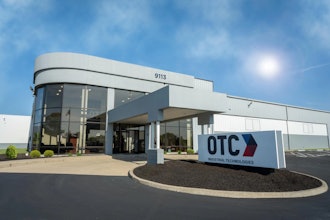
Distribution industry observers should be used to a steady drumbeat of consolidation news by now, but still, nearly every year, a deal seems to come along that shakes up the picture more than most.
Five years ago, it was Wesco’s $4.5 billion purchase of Anixter; then, it was Motion snapping up Kaman Distribution Group for $1.3 billion, followed by Sonepar selling off its industrial subsidiary into Vallen. Two years ago, Graybar bought Valin, and last year, Applied Industrial Technologies acquired Hydradyne.
Amid a tumultuous economic and political environment, it would have been reasonable to wonder whether the industry’s major players would hold tight in 2025.
As the first half of the year wrapped up, however, it became clear that the segment would likely have at least one blockbuster M&A deal this year, after all.
DNOW Inc. in late June announced a $1.5 billion deal to acquire fellow Houston distributor MRC Global — combining two of the top 15 companies on ID’s most recent Big 50 into a $5 billion distributor spanning across the industrial and energy markets. Curiously, it would be the smaller company – by revenue, at least – doing the acquiring: DNOW, no. 14 on the 2024 Big 50 list, will absorb MRC, the no. 10-ranked Big 50 distributor, in the all-stock transaction.
Those rankings, however, reflected broad sales numbers from the previous fiscal year — and not the dramatically different directions each company has headed in the months since.  DNOW Inc.
DNOW Inc.
MRC announced a share repurchase program of its own to open 2025, but the similarities largely end there. The company – which dates back more than a century – has seen sales slide for nearly two years and posted consecutive quarterly losses in its most recent earnings reports. It also announced plans to sell off its operations in Canada.
Rob Saltiel, MRC’s president and CEO, characterized the company’s past few years as a “significant transformation” in a call with analysts following the merger announcement. He contended that MRC had strengthened its balance sheet, bolstered its cash generation and improved profitability — but that “the time is right” for the proposed tie-up.  MRC Global
MRC Global
A combined company would have an estimated enterprise value of $3 billion and account for $5.3 billion in combined revenues over the 12-month window ending in March. Its footprint would span 350 distribution and service locations serving the upstream, midstream and downstream oil and gas segments, as well as gas utility, renewable energy and industrial customers, across the U.S., Canada and “attractive international markets,” added DNOW President and CEO David Cherechinsky, who will lead the combined distributor. He highlighted a wide range of complementary positions between the two companies, including the potential for combining MRC’s downstream and utility expertise with DNOW’s process solutions, incorporating MRC pipe, valves and fittings into DNOW’s water management and oil and gas operations, and coupling DNOW’s midstream platform with MRC’s valve modification and actuation capabilities.
“With the ability to deliver a comprehensive suite of solutions, we’re able to attract new customers, strengthen existing customer relationships, unlock cross-selling opportunities, establish new strategic supplier partnerships and enhance existing ones,” Cherechinsky said.
The merger announcement highlighted an anticipated $70 million in cost synergies within three years of closing, but Cherechinsky told analysts that “the real power” in the merger was its growth potential.
“Our immediate priority is, really, to establish how we connect our sales teams to grow the business,” Cherechinsky said of the integration process. “Top talent retention, growing revenues, implementing cross selling strategies to grow the business — that’s priority one.”
The cash generated by the combined business, meanwhile, would help ensure that it won’t need to slow down much, if at all, on the acquisition front, either.
“Organic growth is our priority no. 1,” Cherechinsky said. “Inorganic growth – M&A – is DNOW DNA.”























